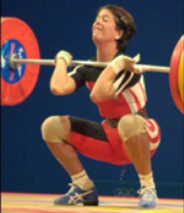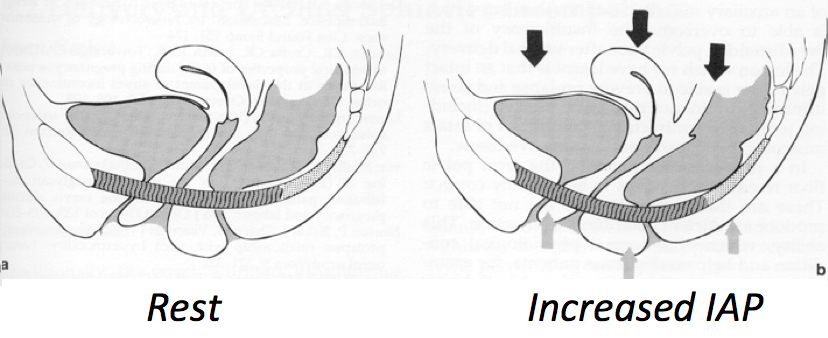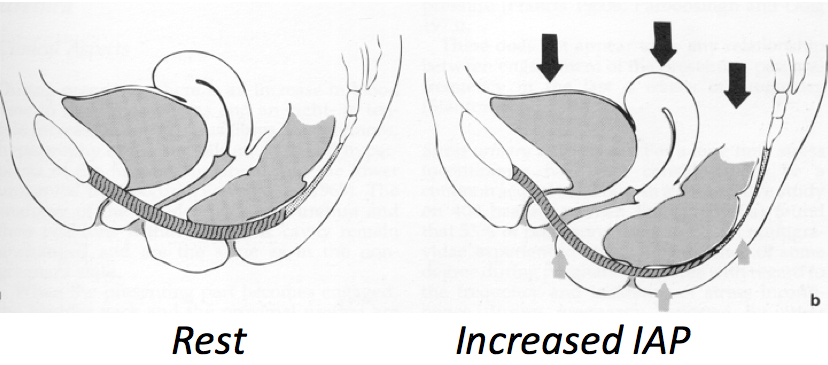PFD In Sportswomen: A Silent Epidemic
Key Messages
- Urinary incontinence & pelvic floor dysfunction in sportswomen is common, but under-reported & under treated
- Pelvic floor dysfunction is a barrier to women being physically active
- Screening all sportswomen, parous and nulliparous, is important
- Recipes don’t work for pelvic floor muscle training, it requires referral to a specifically trained practitioner
Urinary incontinence and pelvic floor muscle dysfunction are too often considered disorders of post-partum and postmenopausal women. However, recent research shows an alarmingly high prevalence of urinary incontinence among nulliparous female athletes – particularly in those participating in repetitive, high impact sports such as gymnastics, netball and running. Urinary incontinence in women exercising and playing sport is under reported, under recognised as an issue and therefore under-treated.
How Common Is It?
A lovely expert review paper by Ingrid Nygaard and colleagues (2016)1 reports the alarmingly high rates of urinary incontinence in nulliparous female athletes:
- 67% gymnasts
- 66% volleyball players
- 44% dancers
- 63% soccer players
- 44% basketballers
- 50% tennis players
- 62% long distance runners
- 80% trampolinists



Image: Weight lifter at Sydney Olympics.
A recent study in Australian recreational netballers2 reported 68% parous and 54% nulliparous females were experiencing urinary incontinence. Almost half were wearing a pad! Unfortunately only a disturbing 7.4% had sought help from a health professional.
What Causes Athletic Women To Develop Pelvic Floor Dysfunction?
Most sports involve high levels of intra-abdominal pressure. Intra-abdominal pressure creates a downward force on the pelvic floor. When the pelvic floor muscles are functioning optimally, they will contract to oppose this downward pressure, supporting the pelvic organs. However, with sports involving repetitive jumping / landing such as gymnastics, these pressures are so high, that it can lead to stretch and eventual weakening of the tissues. If a woman has experienced pregnancy or childbirth, the effect of intra-abdominal pressure is even more significant.

Image: Pelvic floor before childbirth

Image: Pelvic floor after childbirth (Schuessler et al 1994)
Do Physically Fit Women Have Stronger Pelvic Floor Muscles?
Many people often assume that physically fit women have stronger pelvic floor muscles. However, an interesting study by Borin and colleagues (2013)3 found this is unlikely to be the case. They assessed pelvic floor muscle strength in 4 groups: volleyball, handball, basketball players and a group of non-athletes. They found groups of women who played volleyball and basketball had weaker pelvic floor muscles compared with the non-exercising group. There was a significant correlation between weaker pelvic floor muscle strength and higher number of games, and on-court workout.
The Solution: Screening and Management
Screening
We know that women are often too embarrassed to seek help for pelvic floor disorders or incontinence, so screening athletic women is very important. A screening questionnaire, such as the ‘Pelvic Floor Bother Questionnaire’ (available in our Referrer Resources section here) is an excellent tool to identify pelvic floor dysfunction.
In addition to a screening tool, you could add 3 or 4 simple questions to your subjective assessment of any women’s health interaction:
- Do you ever leak when you exercise, cough, sneeze, laugh or rush to the toilet?
- Do you ever feel a bulge in your vagina?
- Do you have any problems with your bowels?
- Do you have any pelvic or sexual pain?
Management: Recipes Don’t Work
Any woman who has identified symptoms on screening should be referred to a pelvic health physiotherapist for a comprehensive treatment program. Many studies have shown that recipes of pelvic floor muscle exercises don’t work. Why? One major reason is incorrect technique. Of women given a brochure on pelvic floor exercises, 1/3 will get it right, 1/3 won’t quite get it and 1/3 get it so wrong they could do damage – up to 50% of women actually depress instead of contracting.
The other main reason is that the pelvic floor muscle training program needs to be based on an individualised clinically reasoned subjective and objective assessment – every patient we see has different symptomatic presentation and training requirements, and their program needs to be specifically designed and progressed over time to reflect this.
Sport and exercise are vital for women to achieve and maintain optimal health. Women face many barriers to exercising – we don’t want urinary incontinence to be yet another!
References
1Nygaard, Ingrid and Shaw, Janet. Physical activity and the pelvic floor., expert review. American Journal of Obstetrics & Gynaecology, February 2016
2 Gill, N., Jeffrey, S., Lin, K., Frawley, H. the Prevalence of urinary incontinence in adult netball players in South Australia. Abstract 391 Neuro-urology & Urodynamics, presented at ICS conference, Florence 2017.
3 Borin, L., Nunes, F., Guirro, E., Assessment of pelvic floor muscle pressure in female Athletes. American Academy of Physical Medicine and Rehabilitation, Vol 5, 189-193, March 2013.
June 2018





